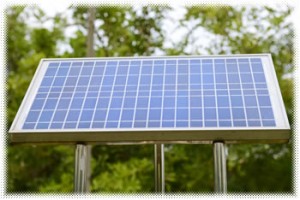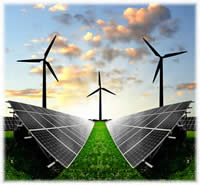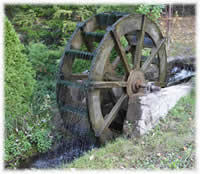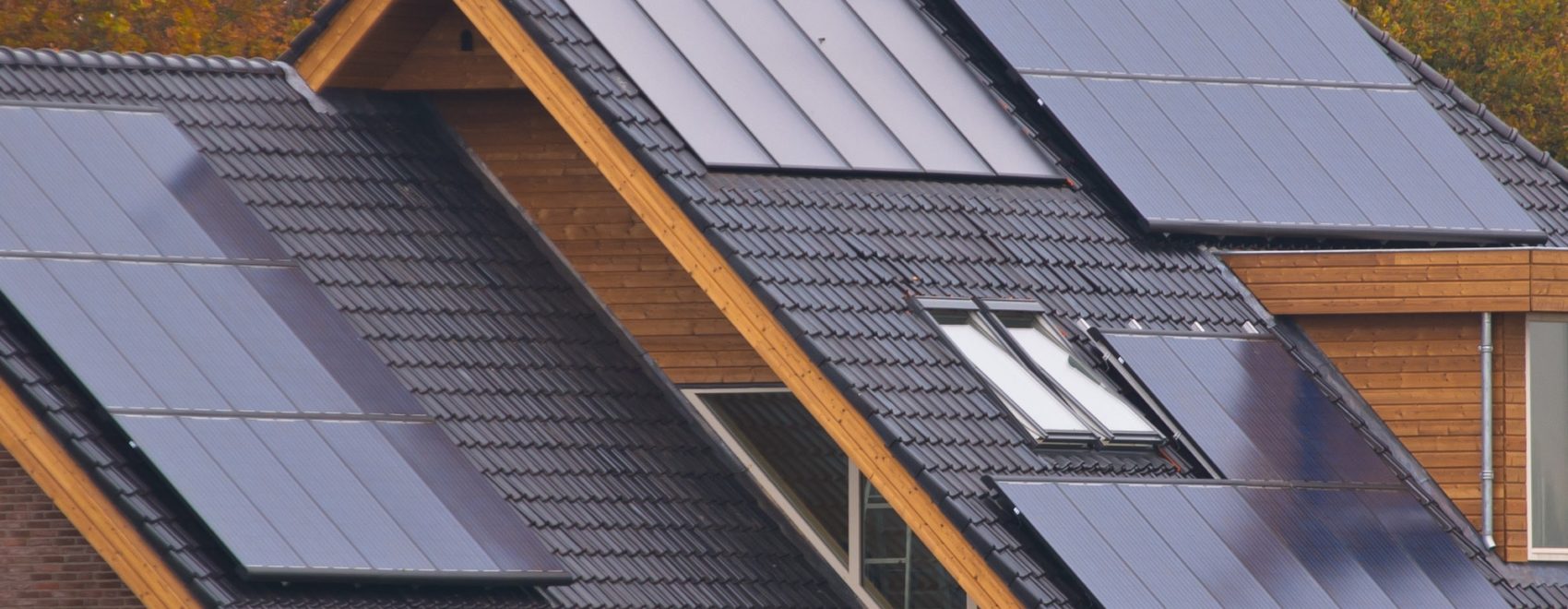How Much Are the Off Grid Energy Costs?
The answer is…well, there isn’t one. The amount you will pay to ditch public utilities for off grid energy is based on a ton of variables. Although it may be a difficult question to answer, let’s take a look at some of the basic cost considerations of off grid living.
Power is definitely the most expensive factor in implementing off grid energy. There are three primary methods of generating electricity at home; solar PV, wind, and hydroelectric power systems. Each system is unique and the costs are largely determined by your installation (especially hydroelectric systems).
Off Grid Energy Costs – Solar Power

Solar power is definitely the most popular and easiest to off grid energy system to implement at home on a DIY basis. The introduction of micro-inverters has greatly decreased the cost and complexity of solar powered systems.
Old-school solar systems relied on a massive, expensive inverter hooked to a large, expensive solar array. The inverter is what converts the DC power generated by the solar panels to AC power used by our appliances.
Micro-inverters can be purchased for about $150 each and allow each solar panel to work independently. This is important because it allows each solar panel in the array to work at maximum efficiency. Older systems relying on a single inverter were only as efficient as the least efficient panel in the array.
Both federal and state governments also give rebates to homeowners who install off grid energy solar systems. The federal government will give you a 30% rebate on the cost of your system and most states will give a flat rate around $2,000.
What this means is that an average household can generate 6 kW of solar power for an initial cost of approximately $14,000 – 18,000. After rebates, this is about $7800 – $10,000 and the break even point will take about five years to reach. Once you hit that break even point, all of your power is 100% free and not reliant on the power grid at all.
Off Grid Energy Costs – Wind and Hydroelectric Power

Wind and hydroelectric power are not as cut and dry. Contrary to popular belief,you don’t have to live in a windy area to have a wind turbine; however, having at least an acre of land suitable for installation of the turbine is recommended.
Another consideration is the varied ordinances and homeowner’s association policies which restrict wind turbine use in residential off grid energy areas. Commercial wind turbines suitable for powering an entire home can range from $10,000 – $50,000 and they have special mounting requirements which significantly add to the costs as well.
The nice thing about hydroelectric power is that it works all the time. Solar only works when the sun is out and wind turbines only work when it’s windy; hydroelectric is a 24/7 operation. Hydroelectric power requires water and the amount depends on the head – the elevation difference between the water supply and the water turbine. The larger the head, the less flowing water required to generate electricity. The water source doesn’t have to be a raging river, but it must provide an adequate flow of water to implement the hydroelectric system to produce off grid energy.
There is a lot of math involved in setting up a hydroelectric system correctly but when they are operational, they produce so much electricity that you may be able to send excess power back to the grid and get a paycheck from the utility company. Be aware that you will most likely need permission from the relevant authorities to install a hydroelectric system for off grid energy, even if it is on your own land.
Since no two hydroelectric systems are alike, the costs can range wildly depending on how far away the water source is located from the house, the elevation difference, and the amount of power that needs to be generated. Costs are typically $1000 to $20,000 depending on the size of the system.
Off Grid Energy Costs – Water

Providing your own water is most easily accomplished using a well. Depending on the terrain and location of the water table in your area, wells can run anywhere from $600 – $10,000. Besides the cost of the well, factor in maintenance of the well filters and treatments, and the type of pump (manual or electric) that you plan to install.
Septic systems usually cost somewhere around $5,000 – $20,000, but these costs will also vary based on location and other factors. Periodic maintenance of septic systems is needed, especially if you have issues with a back-ups or tree roots growing into the septic tank.
All these zeros may have you reconsidering an off grid energy lifestyle. The key thing to remember is the reason you decided to go off grid in the first place. Self-sufficiency is invaluable and although making the switch can be expensive, it is only a matter of a few years before you break even and can enjoy the benefits of living off grid (and not paying utility companies).


Leave a Reply